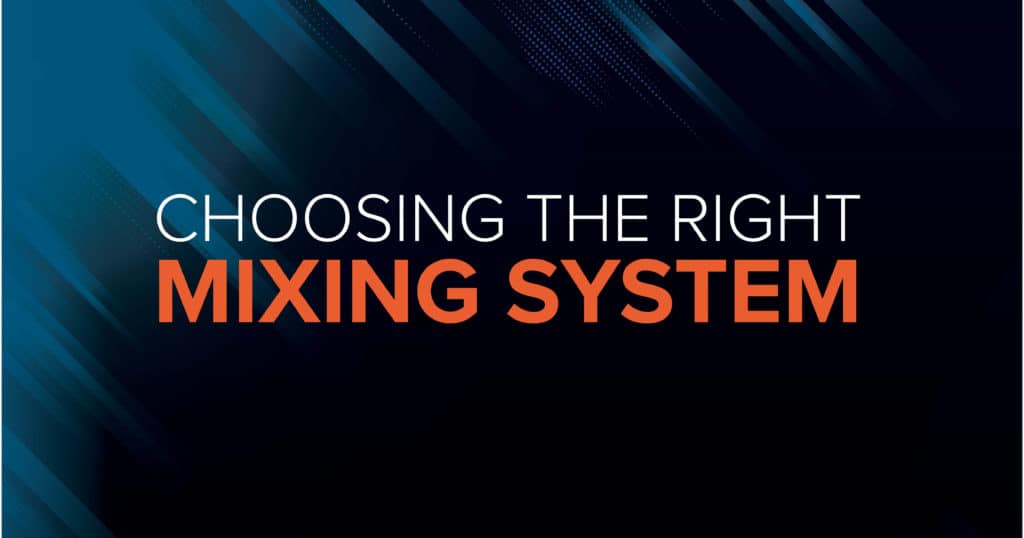Many industrial applications require the use of a mixing system in a tank to store and agitate process materials. Just like pumps themselves, mixing equipment can vary quite a bit. There are a number of different mixing systems designed for various purposes and benefits.
There are four common types of mixing systems we see utilized by our clients:
- Top-Entry Mixers
Top-entry mixers (also known as overhead mixers) are found in some of the largest industrial applications. As the name implies, the mixer is situated at the top of the tank and agitates the process fluid or solids-bearing liquids from above. When you have ample ceiling space, an outdoor tank configuration or a large tank that can handle a heavy overhead system, a top-entry mixer tends to work best. They do require a large support structure and higher initial cost to install. - Side-Entry Mixers
Side-entry mixers offer different agitating characteristics than top-entry mixers. However, the choice to use a side-entry design is often related to the tank itself. Sometimes, the top of the tank cannot support the weight and bending loads of a top-mounted mixer. Side-entry mixers push fluid along the walls of the tank. They can be easier to maintain thanks to easier access to controls and equipment. The resulting mixes can sometimes be less consistent and most side-entry mixing systems consume more energy during operation than equivalent top-entry options. - Portable Mixers
When you have smaller batches that need mixing, you can consider a portable mixer that isn’t permanently attached to the tank. There are a wide variety of different portable mixing equipment options out there. Selection considerations include the mixer’s size, speed, torque, shear rates and impeller design—all factors that must be weighed in light of the specific tank and process fluid. - Hydraulic Mixers
Hydraulic mixing systems are becoming more popular as alternatives to top-entry and side-entry mixers. A hydraulic design will use a centrifugal pump to agitate tank contents, which might be chemicals, crude oil, water, wastewater, slurries or other fluids that require circulation and agitation. The system creates a consistent circular fluid motion that covers the tank from top to bottom for a more uniform mixing result. Hydraulic mixing systems still aren’t ideal for every tank mixing application, so it’s important to do your research.
Other Factors to Consider
You will want to look at the configuration of your tank and the materials or fluids you are processing before deciding which type of mixing system is best for your application. A top-entry mixing system or hydraulic mixing system may cost you more upfront, but will save you money over time with less maintenance, consistent production and better operating efficiency. Or, a side-entry mixing system may be a more effective option for your specific tank and application. In some cases, a portable mixer is preferred.
Sharpe Mixers
DXP Pacific represents a number of great pump equipment manufacturers, including mixing systems. We recently aligned with Seattle-based Sharpe Mixers, a subsidiary company of Hayward Gordon. They are a leading producer of exceptional mixing equipment, with a focus on top-entry mixers, side-entry mixers and portable mixers. Sharpe products are utilized in a variety of industries such as pulp and paper, water management, oil and gas, chemical processing, pharmaceuticals, agricultural and sanitation.
To learn more about Sharpe Mixers and for help in finding and configuring the ideal mixing system for your operation, contact DXP Pacific today.

